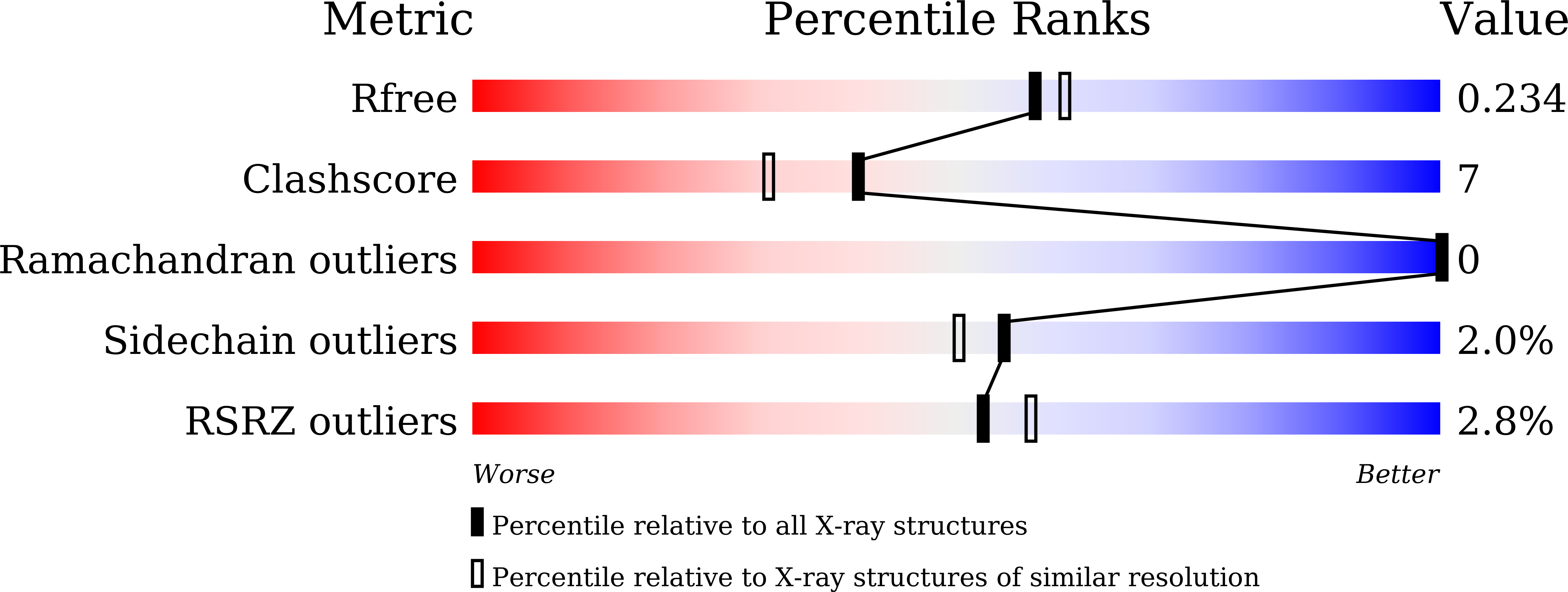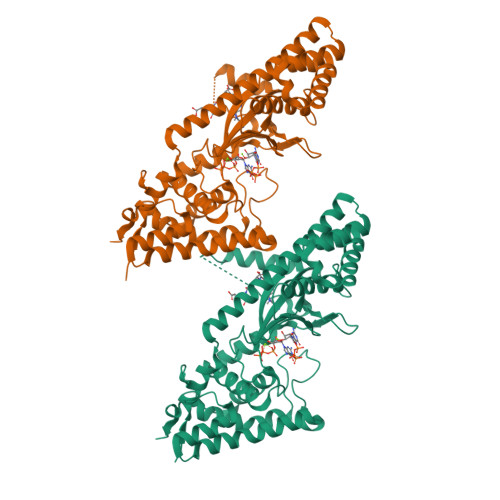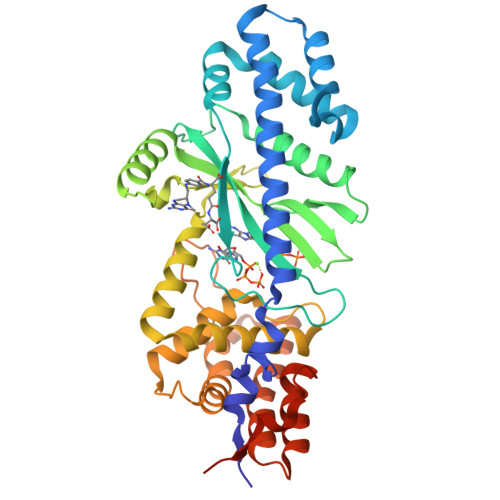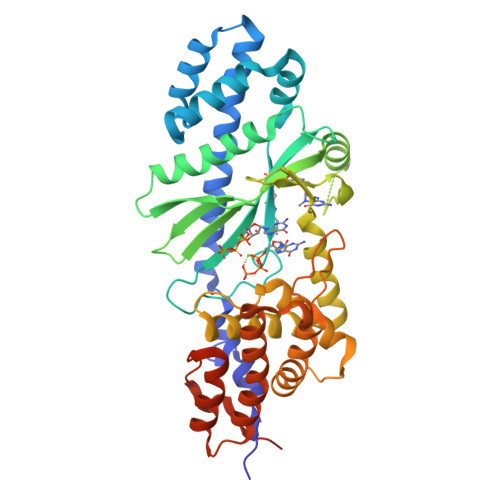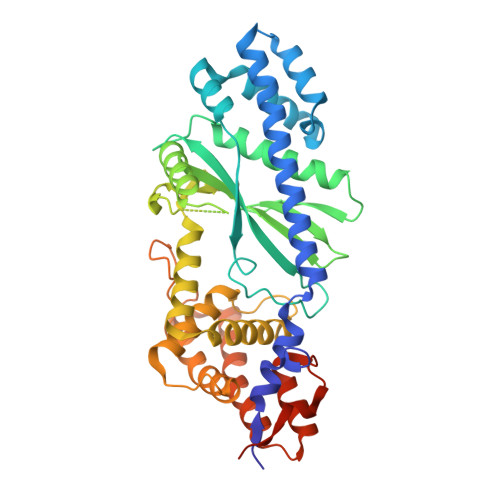Structural Biochemistry of a Vibrio cholerae Dinucleotide Cyclase Reveals Cyclase Activity Regulation by Folates.
Zhu, D., Wang, L., Shang, G., Liu, X., Zhu, J., Lu, D., Wang, L., Kan, B., Zhang, J.R., Xiang, Y.(2014) Mol Cell 55: 931-937
- PubMed: 25201413
- DOI: https://doi.org/10.1016/j.molcel.2014.08.001
- Primary Citation of Related Structures:
4U03, 4U0L, 4U0M, 4U0N - PubMed Abstract:
Cyclic dinucleotides are a newly expanded class of second messengers that contribute to the regulation of multiple different pathways in bacterial, eukaryotic, and archaeal cells. The recently identified Vibrio cholerae dinucleotide cyclase (DncV, the gene product of VC0179) can generate three different cyclic dinucleotides and preferentially synthesize a hybrid cyclic-GMP-AMP. Here, we report the crystal structural and functional studies of DncV. We unexpectedly observed a 5-methyltetrahydrofolate diglutamate (5MTHFGLU2) molecule bound in a surface pocket opposite the nucleotide substrate-binding groove of DncV. Subsequent mutagenesis and functional studies showed that the enzymatic activity of DncV is regulated by folate-like molecules, suggesting the existence of a signaling pathway that links folate-like metabolism cofactors to the regulation of cyclic dinucleotide second messenger synthesis. Sequence analysis showed that the residues involved in 5MTHFGLU2 binding are highly conserved in DncV orthologs, implying the presence of this regulation mechanism in a wide variety of bacteria.
Organizational Affiliation:
State Key Laboratory of Microbial Technology, School of Life Science, Shandong University, Jinan 250100, China.







